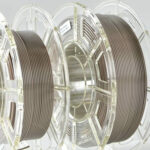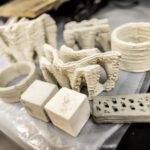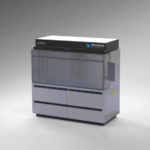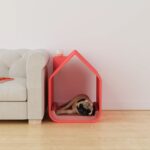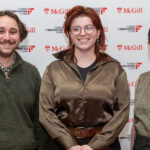Machined PEEK plastic has been used in custom cranial implants for some time, as it is strong, light, and biocompatible. Recent efforts have yielded a range of printable medical-grade PEEK filaments with a focus on biocompatibility, and as a result, AM technology is now being used to produce custom cranial implants at the point of care (in the hospital).

As the popularity of the material’s usage increases, there are questions surrounding the reliability of implants 3D printed in PEEK.
Some of those reliability-related questions have been answered recently thanks to a research team from universities in Switzerland and Holland, who have published the results in a recent paper.
The paper offers a quantitative assessment of point of care (POC) manufactured, 3D-printed PEEK implants for cranial reconstruction through characterization of the geometrical, morphological, and biomechanical aspects of the implants in question.
In other words the paper is concerned with the clinical reliability of the FFF manufactured implants overall.
So why use FFF? Because this is the most common type of printing technology used in printers.
The study results revealed that the printed customized cranial implants had high dimensional accuracy and repeatability, and displayed clinically acceptable morphologic similarity concerning fit the continuity of the implant contours.
These factors are vitally important, as the implants are intended to improve the quality of life of the patient, and so repeatable quality, predictable geometry and fit are important to the comfort and wellbeing of the patient.
Mechanically speaking, it was noticed that the tested implants of various models had variable peak load values with discrete fracture patterns and failed at a mean (SD) peak load of 798.38 ± 211.45 N. That’s the equivalent of about 80kg of force (± around 20kg). Engineers among you may notice that is a fairly large range. This variability is explained as being a result of the bonding between layers, and the air gaps/porosity within the print.

The parts that could withstand higher forces before fracture were those with the most uniform interlayer bonding, and those that fractured under lower forces were those with greater air gaps between the filament tracks in the print.
The paper also states that when compared to sintered or machined PEEK implants, the FFF versions tested were able to retain their overall shape after the fracture better.
This lack of fragmentation in the FFF samples is apparently better for retrieval of failed implants – because surgeons don’t want to be rooting around for pieces of shattered plastic inside a patient’s head, presumably. Makes sense.

Overall, the conclusion of the paper states that PEEK cranial implants printed with the FFF method has acceptable dimensional accuracy for the use in these implants, is repeatable, and has sufficient strength.
Further work apparently needs to be done to reduce the variability of the results in terms of the peak load the implants can withstand before failure. But overall, it seems that FFF PEEK implants are certainly an avenue worth exploring further, for reasons of machine accessibility and reduced fragmentation compared to molded and SLS’d implants in the same material.
The full paper titled “Quantitative Assessment of Point-of-Care 3D-Printed Patient-Specific Polyetheretherketone (PEEK) Cranial Implants” was published in the International Journal of Molecular Sciences (IJMS) and is available (open access) at this link, if you would like to read more about the research.


